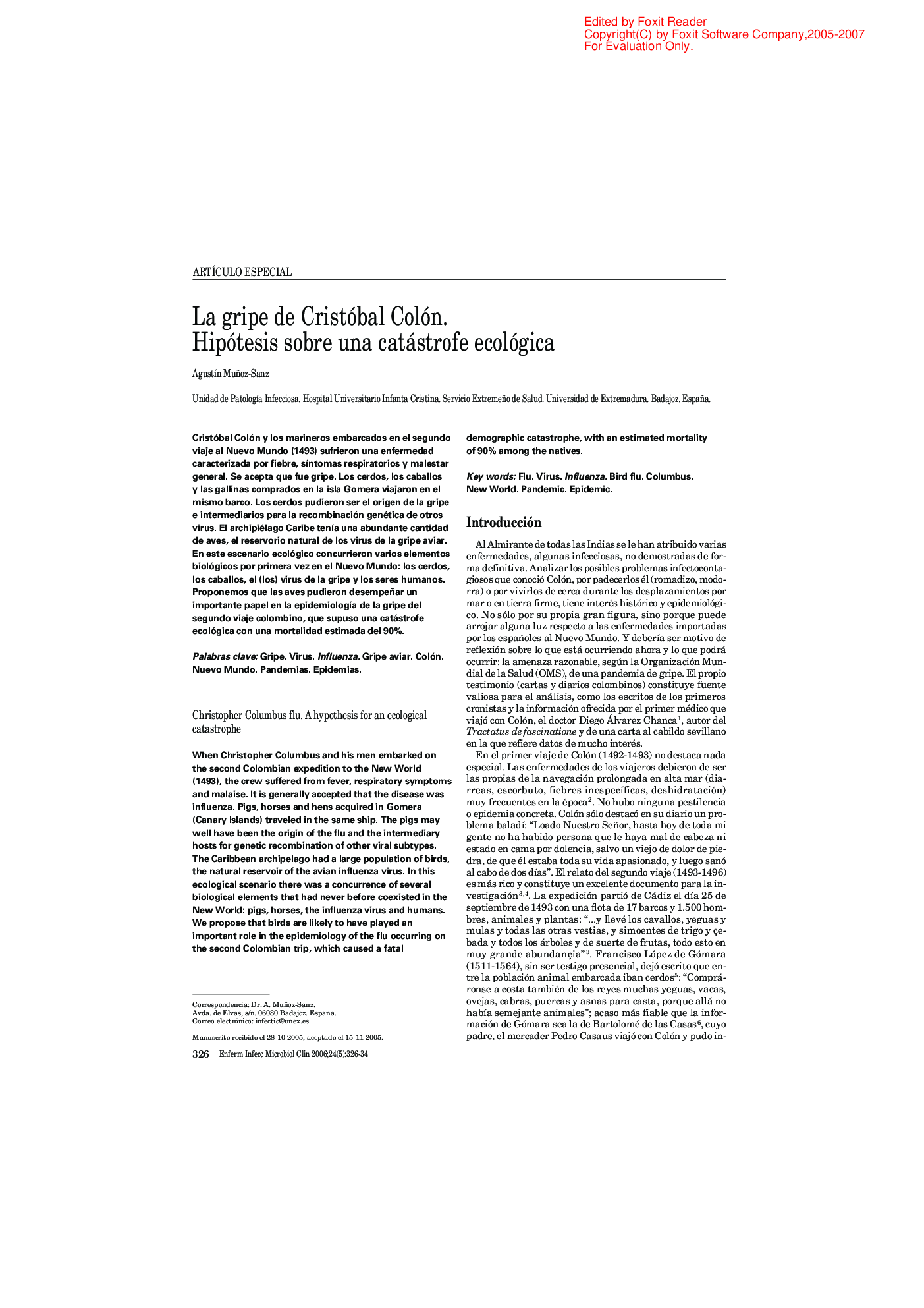| Article ID | Journal | Published Year | Pages | File Type |
|---|---|---|---|---|
| 3403053 | Enfermedades Infecciosas y Microbiología Clínica | 2006 | 9 Pages |
Abstract
When Christopher Columbus and his men embarked on the second Colombian expedition to the New World (1493), the crew suffered from fever, respiratory symptoms and malaise. It is generally accepted that the disease was influenza. Pigs, horses and hens acquired in Gomera (Canary Islands) traveled in the same ship. The pigs may well have been the origin of the flu and the intermediary hosts for genetic recombination of other viral subtypes. The Caribbean archipelago had a large population of birds, the natural reservoir of the avian influenza virus. In this ecological scenario there was a concurrence of several biological elements that had never before coexisted in the New World: pigs, horses, the influenza virus and humans. We propose that birds are likely to have played an important role in the epidemiology of the flu occurring on the second Colombian trip, which caused a fatal demographic catastrophe, with an estimated mortality of 90% among the natives.
Related Topics
Life Sciences
Immunology and Microbiology
Microbiology
Authors
AgustÃn Muñoz-Sanz,
